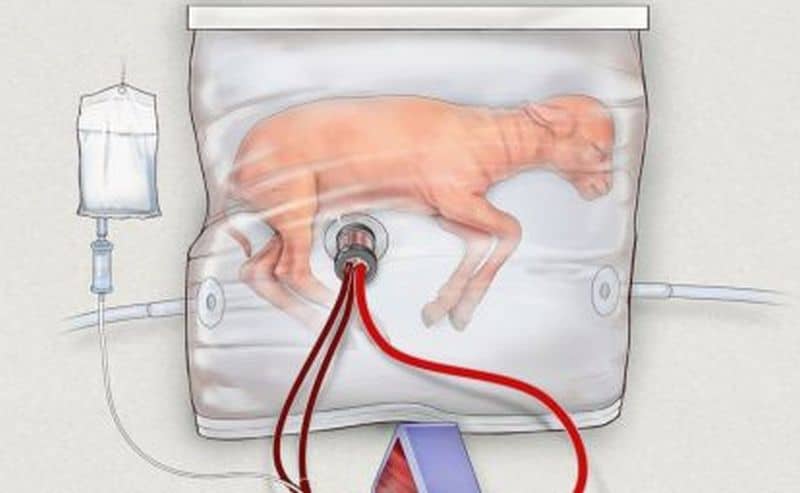If someone were to time-travel from centuries ago into the present, they would be surprised at the current scientific advancements. Various medical treatments, technological advancements in the healthcare sector, and advanced means of communications are sure to leave a person of the past spellbound. This is how the future of reproductive technology is bound to look like. We are definitely going to react in the same way if we were told what the future of science holds.
Medicine has evolved drastically, but there is still a long way to go
Science has made similar progress in reproduction technology too. The artificial womb experiment has proven that life can be developed and grown outside the womb. The future of reproductive technology holds multiple benefits. It is full of shocking discoveries and different opinions from experts all over the world.
Understanding artificial reproduction:
People are opting for artificial insemination and surrogate pregnancies; but an artificial womb is on an entirely different level. Assisted reproduction in humans is when babies grow and developed in an artificial womb-like environment instead of the mother’s womb. This artificial womb works like an incubator providing the baby with all required nourishments as the mother’s natural womb would.
This type of reproduction has plenty of amazing benefits. However, it even comes with its own challenges. In the next few decades, artificial reproduction is bound to replace sexual reproduction altogether. Until then, it only seems like a far-off reality.
So far, the artificial womb experiment has only been carried out only on lambs. Human fetuses are yet to undergo the same process. Artificial reproduction is expected to be the norm in the future while old-school sexual reproduction becomes something of the past.
The Artificial womb experiment:
A team of scientists in Philadelphia ran an experiment with fetal lambs while they were still in their gestational period. These lambs were 100-120 days into their gestation and placed in an artificial womb for 4 weeks from there on.
This artificial womb or incubator worked like a natural womb here. It consisted of amniotic fluid and this synthetic amniotic fluid is scientifically termed as ‘biobag.’ In addition to that, the lamb’s umbilical cord was connected to a life support machine placed outside the biobag.
A note on the way the experiment was carried out
The machine worked in replacement of the mother’s placenta. It provided all the essential nutrients and vital requirements for the survival and growth of the fetus. Furthermore, the artificial womb was completely sealed to keep infections at bay. This incubator was placed in a dark and warm room resembling the mother’s womb. Even the mothers’ heartbeats were also played in the background.
At the end of 4 weeks, the team of scientists working on the experiment observed that the lambs’ conditions were perfectly normal. Not only that, the lambs even grew up like any other normal lamb. These scientists concluded that this artificial womb experiment was a success on lambs and could be extended to human babies as well. This is only a gist of what the future of reproductive technology looks like.
The future of reproductive technology and sexual reproduction:
There will come a time when not only gestation, i.e. ectogenesis, but also the entire duration of pregnancy will happen artificially. When it comes to that, assisted reproduction is bound to replace sexual reproduction. In other words, the end of sexual reproduction is not so far away.
As of now, no experiments are conducted upon humans yet. Lamb fetuses have responded well, no doubt, but the same cannot be said about humans. Human pregnancies last longer than sheep pregnancies. There are other challenges, too, associated with assisted reproduction. So, there may be some sort of complication arising in the process.
Even so, one cannot expect artificial reproduction for humans anytime soon. This process will take anywhere from 20-40 years for it to become a reality. It will take another decade or so for people to start accepting it as a norm.
What are the advantages of Artificial Reproduction?
Sterile couples, transgenders, and homosexual couples are the most likely to benefit from this advancement. They cannot rely on natural methods of giving birth. Assisted reproduction in humans will be nothing but a boon for such people.
Fertile couples may opt for it, too. Practically speaking, pregnancy is quite an uncomfortable period for any couple. And if they can choose to leave the baby back at the hospital till it is physically ready, why not?
The chances of birth-related problems and issues will be considerably reduced. The mother and the baby will be more likely to be healthy. The future of reproductive technology may be a tad expensive than natural birthing, it will be painless and comfortable. She can continue working and living a normal life when the baby is developing in the artificial womb.
What are the challenges associated with Assisted Reproduction?
- The concern with the future of reproductive technology is that a trustworthy group of experts must monitor it.
- Reliable and ethical people and not individuals who are looking out for extra money would need to look the article womb.
- The issue with abortion can get complex. Killing a fetus inside the body is unlike killing it when you can actually see it living and breathing.
- The mother’s daily exercise schedule plays a part in the growth and development of the baby. With artificial reproduction, nothing can be commented on this aspect yet.
- A pregnant woman’s thoughts, overall mindset, likes and dislikes, all play a role in the baby’s growth. This possibility will be lost in the future of reproductive technology.
- There is still no clarity on whom to hold responsible if anything goes wrong in this process.
Conclusion:
Moving at this rate, the future of reproductive technology looks extremely promising. Even so, nothing much can yet be said about its practical use. It is going to be expensive, no doubt, and a little unreliable too. Researchers are figuring out better and safer means to make this process simpler and more effective than it is now.
Although this experiment has proved successful for sheep, it hasn’t yet been proved so for humans too. There is still a long way to go before artificial reproduction in humans becomes a reality. Scientists are expecting to leave the end of sexual reproduction in the wake of this process.







